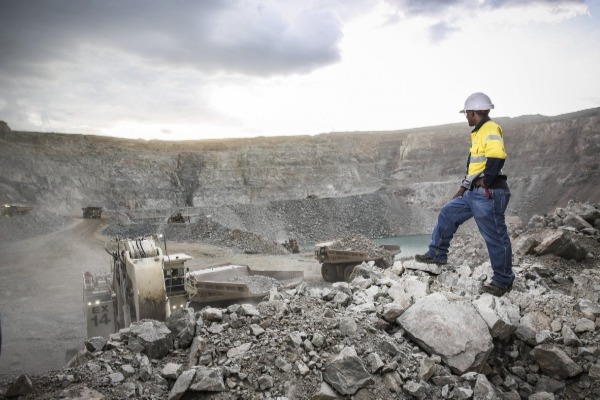UK firm upbeat on Zim lithium drilling
UK-headquartered resource group, Galileo Resources says it has completed phase one of its lithium exploration drilling programme at its Kamativi project in Matabeleland North Province.
This comes as preliminary evaluation from earlier drilling indicated encouraging potential for commercially viable deposits of the valuable mineral, which is expected to play a key role in the growth of Zimbabwe’s mining industry and economy in general.
In April last year, the mining concern, which also has a gold asset project near Bulawayo, announced it had started exploration works on both projects.
Galileo Resources is engaged in the exploration and development of gold, copper, rare-earth aggregates and iron ore and manganese.
Outside Zimbabwe, the Alternative Investment Market (AIM) listed firm’s projects include the Kalahari copper project in Botswana, Kashitu project, and Star Zinc projects in Zambia, among others.
In the latest update, the mining group said it was pleased to inform shareholders regarding progress on drilling and further exploration for lithium on the Kamativi project.
Lithium is currently one of the most sought-after minerals given its centrality in the manufacture of lithium batteries used in electrical vehicles.
Demand for lithium is expected to grow exponentially across the globe, as the world transitions to EVs, which are part of key global initiatives aimed at steering away from sources of nonrenewable energies to reduce emissions that drive pollution harmful to the environment.
Zimbabwe, which has attained its target of building mining into a US$12 billion industry, is the world’s sixth-largest producer of lithium and is expected to benefit significantly from the growing demand for lithium and EVs.
Zimbabwe now has two active lithium mines, Bikita Minerals and Prospect Resources, which recently commenced production and is considered the largest lithium operation on the continent. Several other large lithium assets are at various stages of development across the country.
“The Phase 1 drilling programme at Kamativi for lithium and associated elements over a pegmatite-rich area of about 1km x 0,5km has been completed, for 1 428,4 metres in 10 holes.
A pegmatite is an igneous rock showing a very coarse texture, with large interlocking crystals usually greater in size than 1 cm and sometimes greater than 1 meter.
“Mineralisation and alteration similar to that reported in the first hole… has been observed in several of the subsequent holes.
“Geological mapping and prospecting have previously identified similar mineralisation/alteration in pegmatite over at least 1,5km strike length which has only been partially drill tested to date,” the company said.
Galileo’s lithium asset is adjacent to the defunct Kamativi tin mine, which hosts a substantial lithium tailings resource, mainly in the form of spodumene (chemical grade lithium), the most sought-after lithium mineral globally.
The group’s chairman and chief executive officer Mr Colin Bird was quoted as saying: “We are very pleased with the initial indications from the Phase 1 reconnaissance drilling programme at Kamativi which was aimed to test the mapped pegmatites and their continuity, if any.
“The programme was expanded from the initial plan to confirm and extend the target zone along strike due to the positive initial results.”
He said all the peripheral work points in the right direction, thus representing a positive start to the overall Kamativi programme.
“It should be noted that we have only tested part of the anomalous zone to date which supports the prognosis that there is good potential to find mineralisation similar to the nearby Kamativi lithium mine within our concession area.
“We also look forward to receiving analytical results for tin, which could represent a significant by-product or even a stand-alone target if found in the right quantities.
“We will continue to inform the market as the programme evolves following this promising start,” said Mr Bird.
Zimbabwe’s mining industry accounts for 83 percent of exports, 73 percent of foreign direct investment, 19 percent of the Government’s revenues, 11 percent of individual incomes, two percent of formal employment and by 2030, the sector is expected to generate more than US$20 billion.
The Government remains optimistic that the future of the mining industry remains bright with the sector well positioned to continue to drive strong economic growth following revelations that a total of 38 active Exclusive Prospecting Orders (EPOs).
EPOs confer upon investors rights to prospect (search) for new mineral deposits in specific geographical locations of the country to foster the discovery of fresh deposits for the opening of new mines and expansion of existing operations.
-herald








